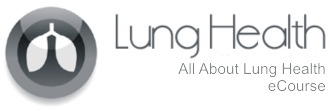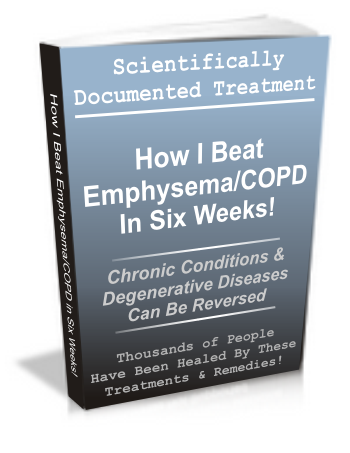
Lesson 9: Diagnostic Tests for COPD
COPD (Chronic Obstructive Pulmonary Disease) is a generic term used to cover two conditions – chronic bronchitis and emphysema. Both cause obstruction of the airways, though in different ways, and reduce oxygen-CO2 exchange efficiency.
As a result, detailed tests are required to distinguish the two diseases. But a set of generic tests which measure airflow, blood oxygen levels, and other factors are still used in an initial diagnosis of COPD.
Spirometry
The first of those tests, spirometry, involves measuring lung capacity.
Spirometry is a simple, non-invasive, air-time measurement test performed in a doctor’s office. The patient inhales deeply then breathes into a tube and the amount of air exhaled is measured.
Three technical variables, called FEV1 (Forced expiratory volume after 1 second), FVC (Forced Vital Capacity), and FEF25-75 (Forced Expiratory Flow at 25%-75%) allow the physician to rank the output. When the results are about 70% of the volume exhaled by a healthy person, COPD of some type is almost assured.
The test is often run multiple times, and a variation called post-bronchodilator spirometry will sometimes be performed. In this test, the patient is given a bronchodilator to relax and expand the airways. The doctor then performs the standard spirometry test and observes the results. Apart from helping to confirm the diagnosis, this variation indicates whether the reduction in lung capacity is reversible.
Lung Volume
In addition to spirometry, the lung volume can be indirectly measured, either with gas dilution or body plethysmography.
In gas dilution, the patient inhales nitrogen or helium instead of air. The volume distribution of the gas is measured as a proxy for lung volume.
Body plethysmography is carried out with the patient in an airtight chamber. He or she then inhales and exhales through a tube and a machine records pressure changes in the plethysmograph to calculate the volume of air the lungs can hold.
The results of the tests are adjusted for height, age, and other individual factors to compare against averages across the population.
Diffusion Capacity
Since the primary function of the alveoli (the tiny sacs at the end of the bronchioles or airways) is to enable gas exchange (of O2 and CO2), a measure of their diffusion capacity is diagnostic.
In this test, the patient inhales a small amount of CO (carbon monoxide). In large amounts it is toxic, but at the levels of the test it is perfectly safe. The amount taken up into the blood is measured by extracting a blood sample and measuring the CO content. This is one way in which emphysema is detected.
Oximetry
Similarly, the amount of dissolved oxygen in the blood provides useful information for diagnosing COPD. There are several ways to go about it.
One test takes a sample of arterial blood and measures the oxygen content. But the test is somewhat painful since extracting blood from an artery is more uncomfortable than from a vein (the usual method). So, an alternative called oximetry is sometimes used.
In this method, a device shines a light through the finger or thumb and the amount transmitted is measured on the other side. Since the amount of light is related to how much oxygen is in the blood, the device can make a non-chemical measurement without requiring a sample. The downside is that the test is less accurate than measuring arterial blood gases (ABG).
Summary
Once these tests are completed your physician will have considerable information on which to base a diagnosis. If COPD is strongly suspected, he or she may recommend follow up tests and begin to form a recommended course of treatment.
End of Lesson 9
To access the next lesson click its #/title in the right sidebar >>
The treatment Jim did is one of the world’s most scientifically demonstrated & documented alternative treatments. Healing successes by it have been documented thousands of times, even in mainstream medical journals, going back over 100 years. Yet, many doctors know little to nothing about it. This list of medical journals includes one of the most prominent, JAMA (The Journal of the American Medical Association).
Jim and Anne’s doctors used diagnostic tests to verify their lung health improvements …

 Are you ready to read Jim’s amazing full recovery story, the detailed natural program he did and thousands of others have done, and much more?
Are you ready to read Jim’s amazing full recovery story, the detailed natural program he did and thousands of others have done, and much more?
If you are, simply click on “BUY EBOOK NOW” at the top of this page. You can have your e-book downloaded to your computer and be reading it in only minutes from now!



